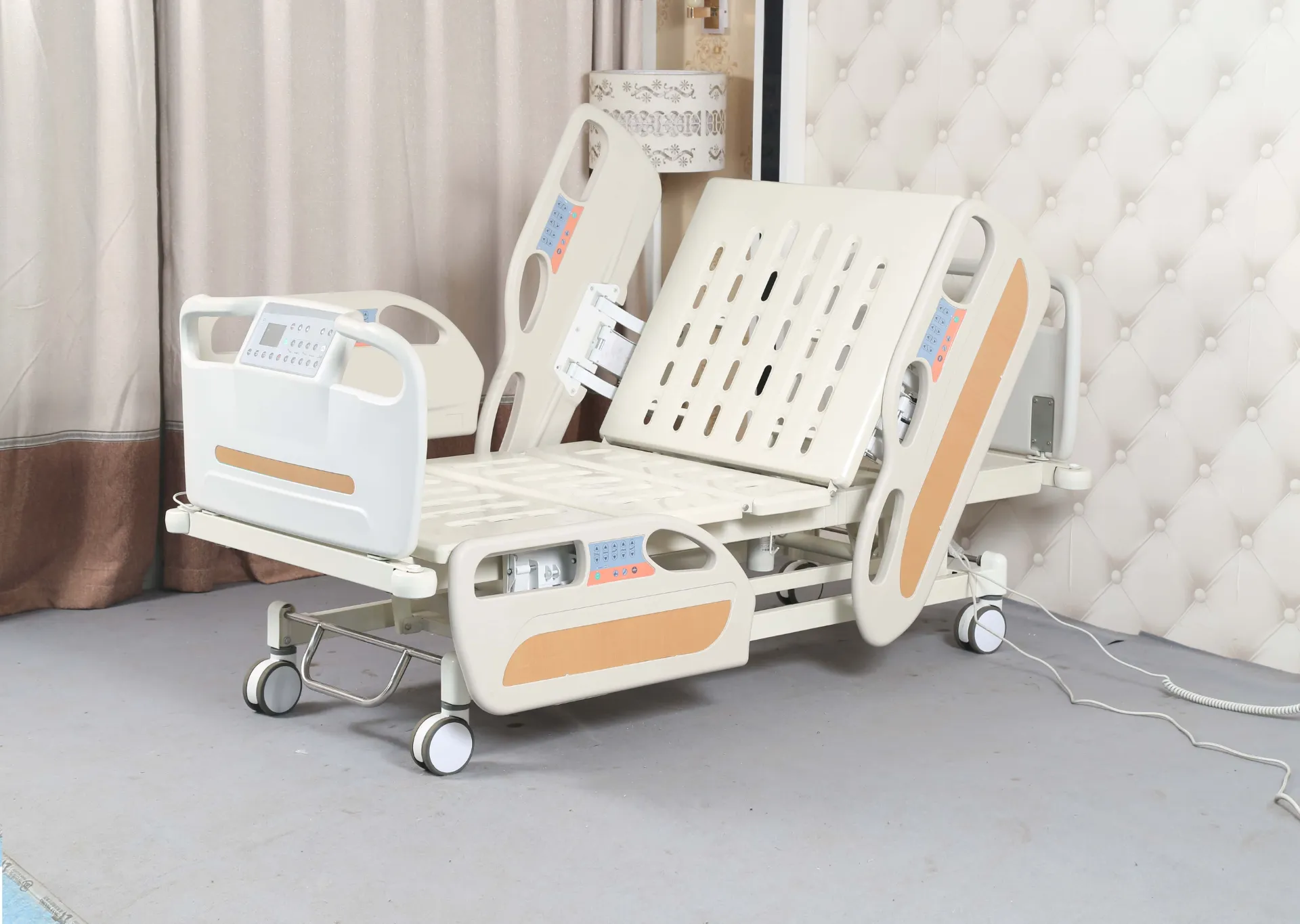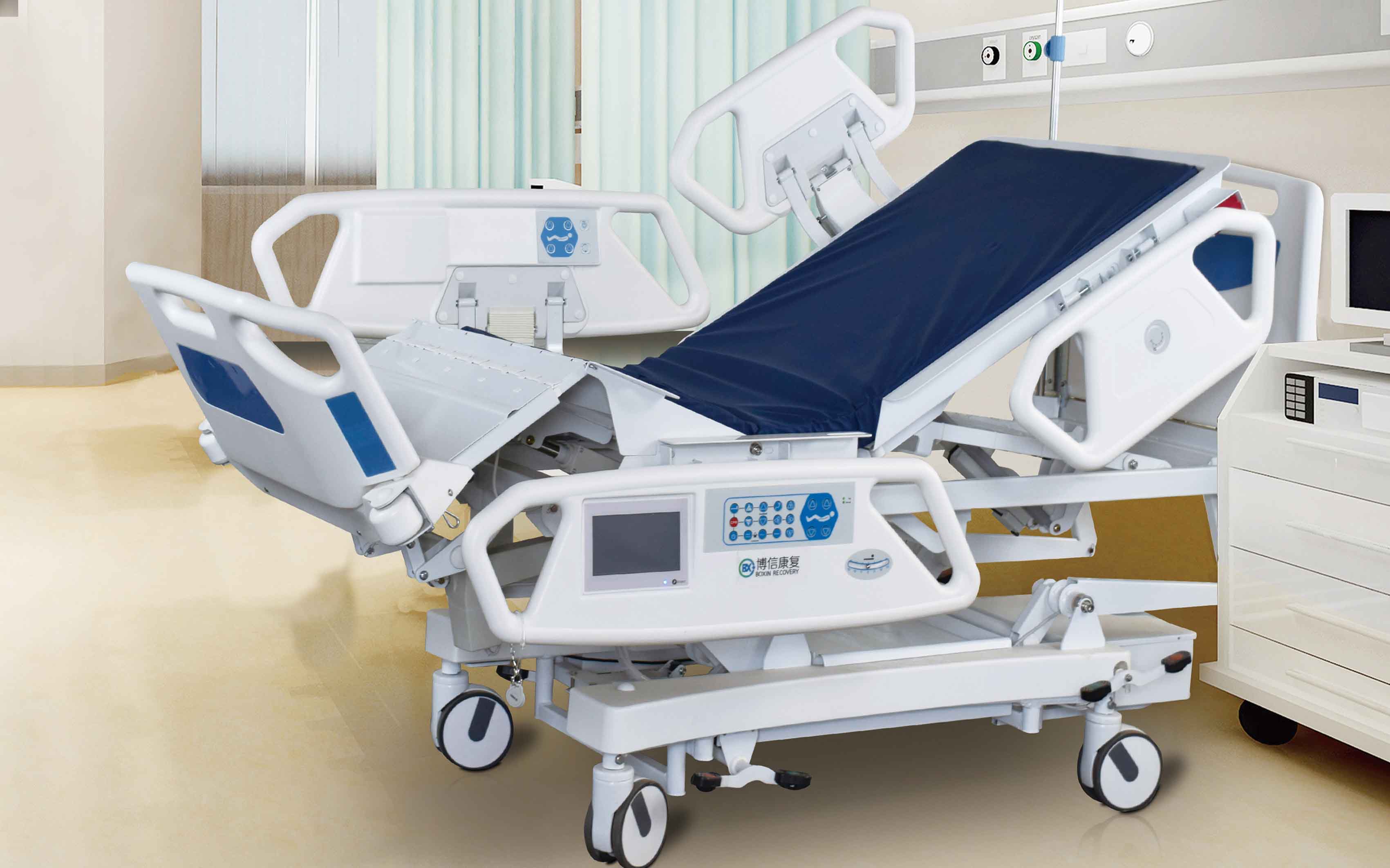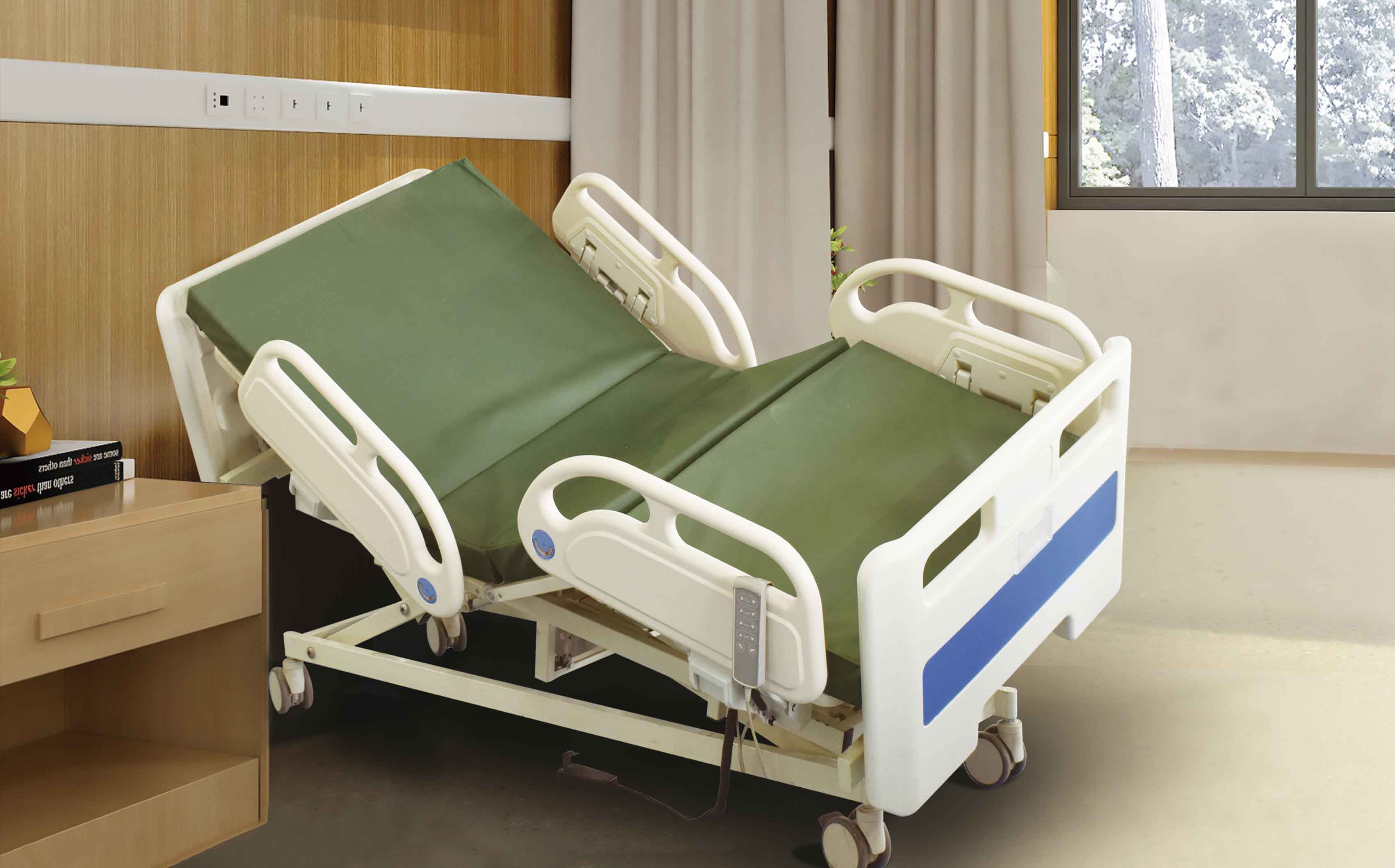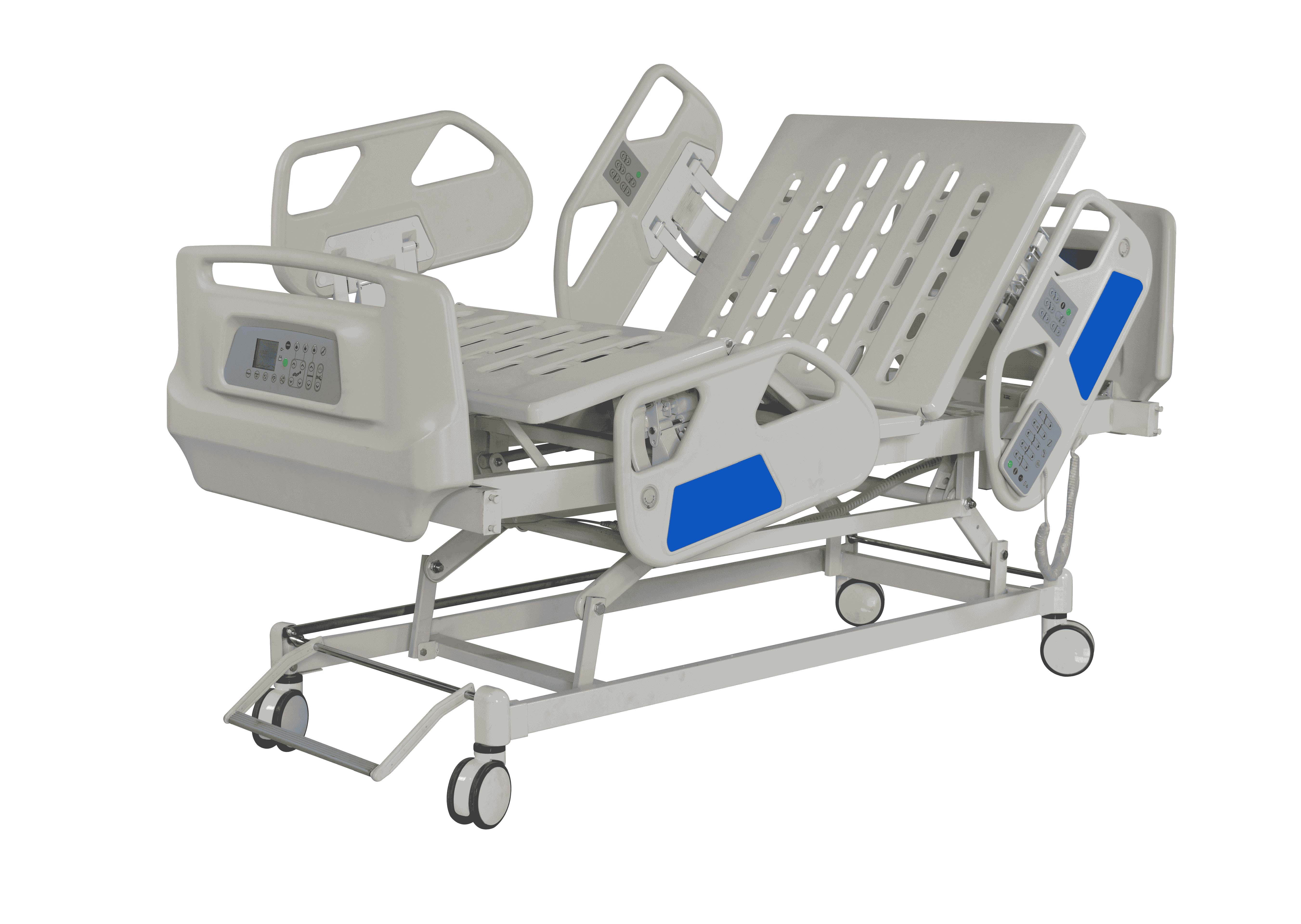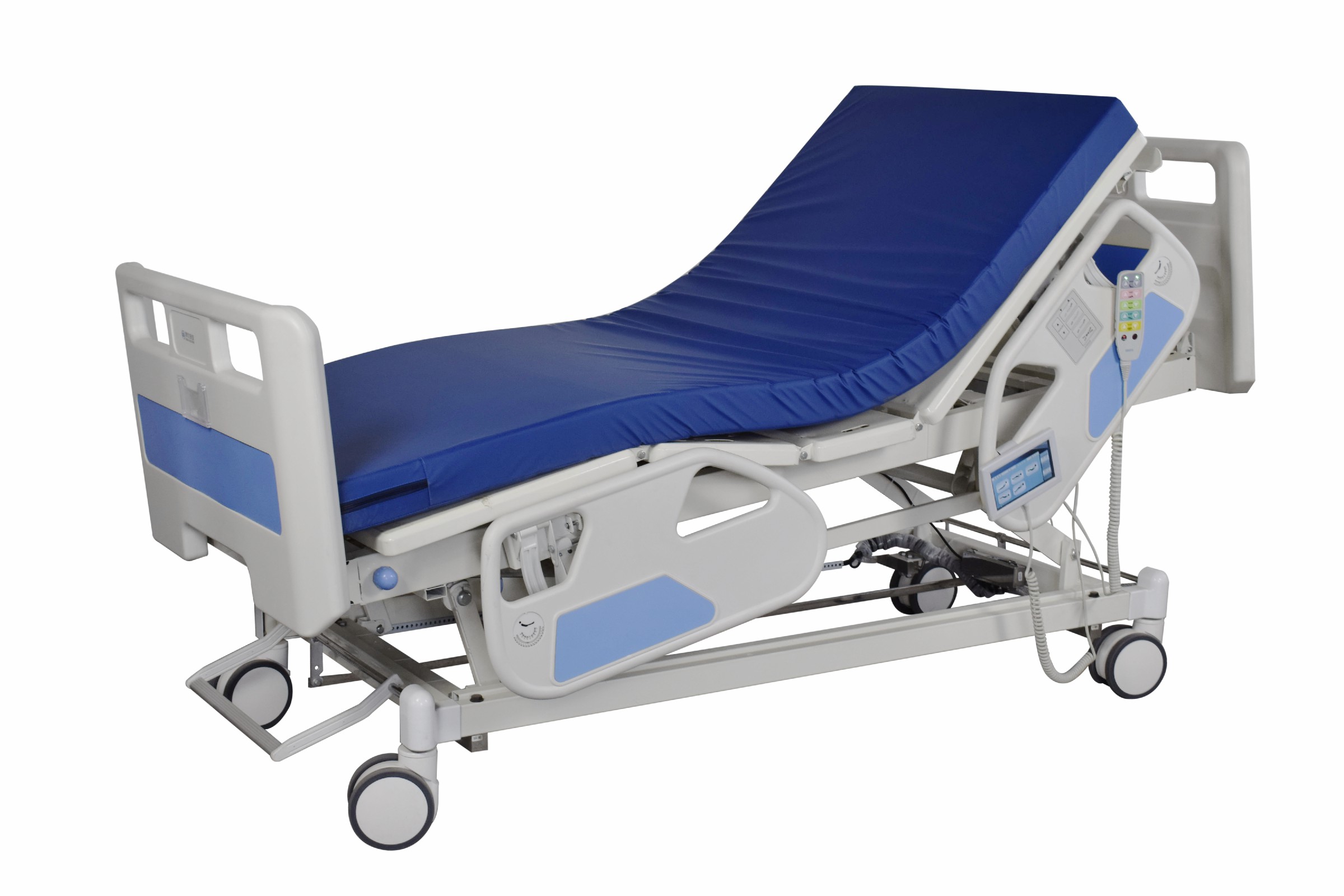Welcome to our websites!
Advanced ICU Beds for Critical Care | Optimal Patient Comfort
In the evolving landscape of modern healthcare, the role of specialized equipment in critical care units cannot be overstated. Among these, icu beds stand as foundational pillars, directly impacting patient recovery, safety, and the efficiency of medical staff. More than just a place for patients to rest, contemporary icu beds are sophisticated medical devices engineered to provide optimal support, facilitate precise medical interventions, and mitigate risks associated with prolonged bed rest. This comprehensive guide delves into the world of intensive care unit beds, focusing on critical industry trends, technical specifications, application versatility, and the crucial factors to consider when sourcing these life-supporting assets.
Our featured product, the China manufacturer handle patient bed in hospital from Boxin, exemplifies the advancements in this field, offering a blend of robust design, intuitive functionality, and patient-centric features designed to meet the rigorous demands of critical care environments. The evolution from a basic hospital bed to a high-tech icu bed reflects a broader shift towards proactive patient management and enhanced ergonomic support for caregivers.
Industry Trends Driving Innovation in ICU Beds
The global market for icu beds is experiencing significant growth, fueled by several macro trends:
- Aging Global Population: As demographics shift, there's an increasing prevalence of chronic diseases and age-related health issues, leading to higher admissions to ICUs.
- Rise in Chronic Diseases: Conditions like cardiovascular diseases, diabetes, and respiratory illnesses often necessitate critical care, driving demand for specialized beds that support complex patient needs.
- Technological Integration: The advent of smart beds with integrated sensors for vital signs monitoring, weight scales, patient position sensing, and automatic turning capabilities is transforming critical care. These advancements aim to reduce manual labor, improve data accuracy, and prevent complications like pressure ulcers.
- Focus on Patient Safety & Comfort: Manufacturers are prioritizing features that enhance patient safety (e.g., fall prevention, entrapment prevention) and comfort (e.g., advanced mattress systems, multi-positioning capabilities).
- Infection Control: The design of icu beds increasingly incorporates antimicrobial materials and easy-to-clean surfaces to combat healthcare-associated infections (HAIs).
- Ergonomics for Caregivers: Features that reduce physical strain on nurses and caregivers, such as electric height adjustment, one-button positioning, and integrated patient handling aids, are becoming standard.
These trends highlight the need for icu beds that are not only durable and reliable but also technologically advanced and adaptable to dynamic clinical requirements.
Technical Parameters and Specifications of Advanced ICU Beds
An icu bed is a sophisticated piece of equipment designed to cater to patients in critical conditions. Key technical parameters are crucial for ensuring optimal performance, patient safety, and caregiver efficiency. The China manufacturer handle patient bed in hospital from Boxin adheres to stringent standards, incorporating features vital for critical care.
Key Product Specifications: China Manufacturer Handle Patient Bed in Hospital
Product URL: https://www.cnboxin.com/china-manufacturer-handle-patient-bed-in-hospital.html
| Parameter | Specification / Description | Benefit to Patient/Caregiver |
|---|---|---|
| Overall Dimensions | Approx. L2150 x W1050 x H460-750mm | Accommodates various patient sizes; optimal space utilization. |
| Adjustments (Electric) | Backrest up/down: 0-75°, Leg rest up/down: 0-45°, Trendelenburg/Reverse: ±12°, Height Adjustment: 460-750mm | Facilitates patient positioning for comfort, treatment, and clinical procedures (e.g., respiratory support, anti-shock). Reduces caregiver strain. |
| Load Capacity | Safe working load: 250 kg (550 lbs) | Supports a wide range of patient weights, ensuring safety and durability. |
| Material (Bed Frame) | High-strength steel, epoxy powder coated | Exceptional durability, resistance to corrosion, and easy to sanitize for infection control. |
| Material (Head/Foot Boards) | Detachable ABS plastic, blow-molded | Lightweight, easy to clean, impact-resistant, and aesthetically pleasing. Quick removal for emergency access. |
| Side Rails | ABS plastic, collapsible with damping device | Patient safety and fall prevention, easy for patients to operate, quiet operation. |
| Casters | 125mm medical-grade silent casters with central braking system | Smooth, quiet mobility; secure locking for stability during procedures and transfers. |
| Motor System | Linak/Timotion (or equivalent medical-grade) electric motors | Reliable, quiet, and precise adjustments; long service life. |
| Control System | Hand controller for patient; Nurse control panel on footboard (optional) | Empowers patient with basic adjustments; provides comprehensive control to caregivers. |
| Standard Features | IV pole sockets, drainage hooks, patient handle assist | Integrated convenience for medical equipment and patient support. |
| Certifications | ISO 9001, ISO 13485, CE (European Conformity) | Ensures compliance with international quality management and medical device standards. |
Application Scenarios of ICU Beds
While named for Intensive Care Units, modern icu beds, including variations like semi beds, exam bed, 3 crank bed, geriatric beds, and general a hospital bed, find versatile applications across various healthcare settings:
- Intensive Care Units (ICU): Their primary domain, where critical patients require constant monitoring and frequent repositioning. The multi-functional capabilities, precise adjustments, and safety features are paramount here.
- Coronary Care Units (CCU): For patients with severe cardiac conditions, requiring specialized positioning and monitoring.
- Emergency Departments (ED): Used for initial stabilization and observation of critically ill or injured patients before transfer to an appropriate ward.
- Post-Operative Recovery Rooms: Providing a safe and comfortable environment for patients recovering from major surgeries, facilitating easy access for nurses.
- High-Dependency Units (HDU): For patients who require more intensive observation, treatment, and nursing care than is possible in a general ward but less than in an ICU.
- Specialized Wards: Such as burn units, neuro-surgery units, or orthopedic wards, where specific patient positioning or handling features are beneficial.
The adaptability of these beds makes them indispensable tools in managing a spectrum of patient conditions, from acute respiratory distress to complex neurological disorders.
Technical Advantages: Elevating Patient Care and Operational Efficiency
The advanced design and engineering of modern icu beds offer numerous technical advantages:
- Enhanced Patient Safety: Features like integrated side rails, central braking systems, and low bed height capabilities drastically reduce the risk of patient falls. Anti-entrapment features and alarm systems for patient movement further bolster safety.
- Superior Ergonomics for Staff: Electric height adjustment, Trendelenburg/Reverse Trendelenburg, and pre-set positions minimize physical strain on nurses during patient care tasks like repositioning, wound care, and transfers. This translates to reduced musculoskeletal injuries among healthcare workers.
- Optimized Patient Comfort & Healing: Multi-section mattress platforms, pressure-relieving surfaces (often compatible with advanced dynamic mattresses), and precise articulation support proper body alignment, prevent pressure ulcers, and improve blood circulation, all contributing to faster recovery.
- Infection Control & Hygiene: Smooth, seamless surfaces made of medical-grade plastics and epoxy powder-coated steel allow for easy cleaning and disinfection, crucial in preventing the spread of hospital-acquired infections.
- Durability and Longevity: Constructed from high-strength steel and robust engineering plastics, these beds are designed to withstand the rigorous demands of continuous 24/7 operation in a hospital environment, ensuring a long operational lifespan and low maintenance costs.
- Integrated Technology: Many beds feature integrated scales, bed exit alarms, nurse call integration, and even central control panel access, streamlining workflow and enhancing patient monitoring capabilities.
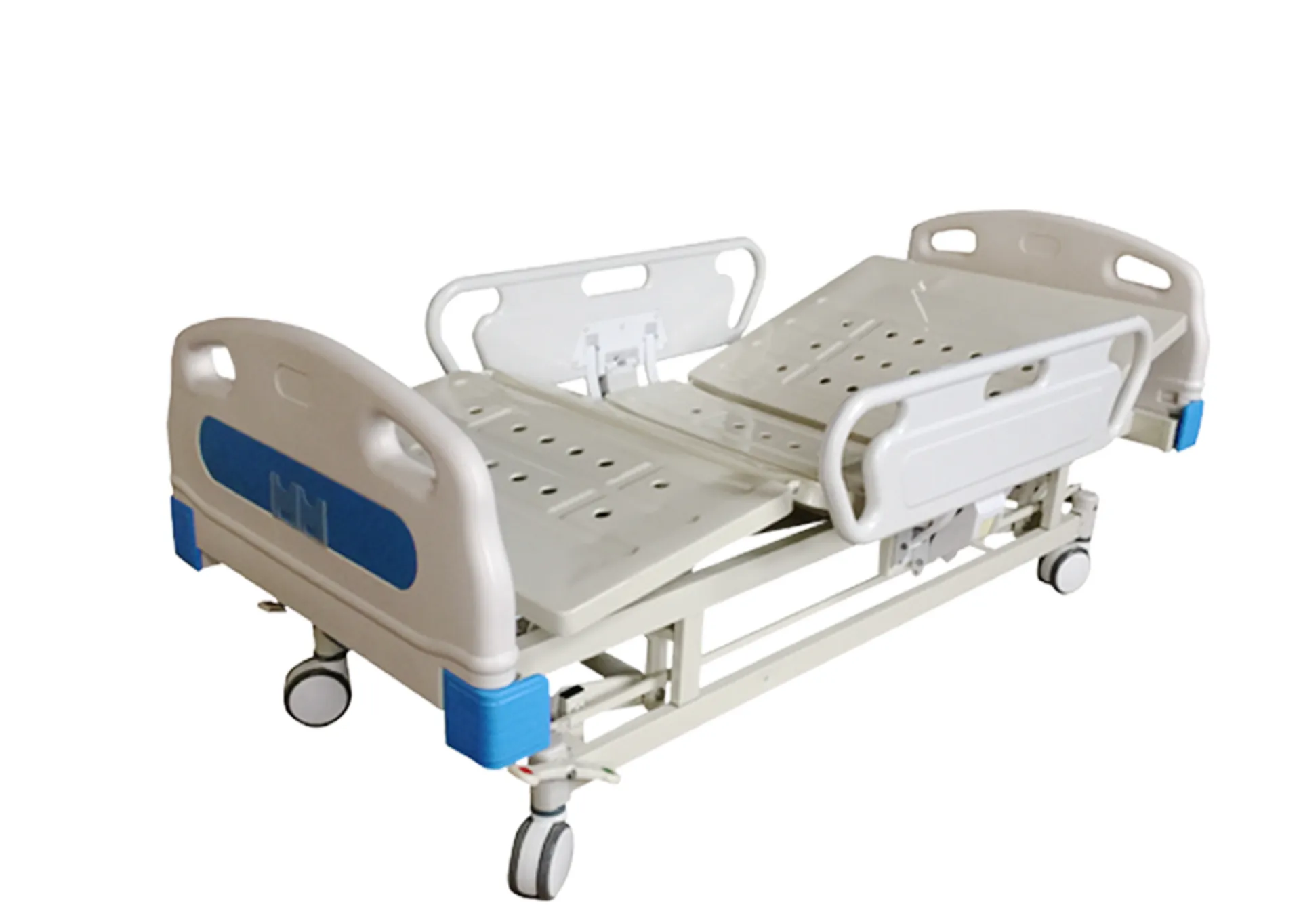
The Meticulous Manufacturing Process of ICU Beds
The creation of a high-quality icu bed is a testament to precision engineering, robust material science, and stringent quality control. Here’s a detailed look at the manufacturing process, highlighting the commitment to durability and performance:
- Material Selection & Preparation:
- Frame & Support Structure: High-grade cold-rolled steel (e.g., Q235B or equivalent) is chosen for its superior strength and durability. This steel undergoes rigorous inspection for material defects.
- Plastics: Medical-grade ABS (Acrylonitrile Butadiene Styrene) is used for head/footboards, side rails, and patient handling areas due to its impact resistance, easy cleanability, and resistance to common hospital disinfectants.
- Motors & Electronics: Sourced from reputable international suppliers (e.g., Linak, Timotion), ensuring reliable, quiet, and long-lasting electric actuation systems that comply with IEC 60601-1 for medical electrical equipment.
- Precision Fabrication (Cutting, Bending, Welding):
- Laser Cutting/CNC Machining: Steel components are precisely cut using advanced laser cutting machines, ensuring accurate dimensions and smooth edges. This minimizes post-processing and ensures perfect fitment.
- CNC Bending: Automated CNC bending machines form the steel tubes and sheets into the required bed frame components, maintaining consistent angles and curvatures.
- Robotic Welding: Components are meticulously welded using robotic welding technology, which ensures strong, uniform, and defect-free joints. This critical step prevents structural failures under stress and extends the bed's lifespan. Every weld is inspected for integrity.
- Surface Treatment & Coating:
- Degreasing & Derusting: Fabricated steel parts undergo thorough cleaning to remove oil, rust, and contaminants, preparing the surface for coating.
- Phosphating: A chemical conversion coating applied to enhance corrosion resistance and provide an excellent base for powder coating adhesion.
- Electrostatic Powder Coating: The prepared metal components are electrostatically coated with medical-grade antibacterial epoxy powder. This process provides a highly durable, scratch-resistant, chip-resistant, and chemically resistant finish that is easy to clean and sanitize, crucial for infection control in hospital environments.
- Assembly:
- Modular Assembly: Sub-assemblies (e.g., motor frame, bed platform sections, side rails) are built independently.
- Integration of Electronics: The electric motors, control units, and wiring harnesses are carefully integrated into the bed frame. All electrical connections are meticulously checked for safety and functionality.
- Final Assembly: All components are assembled onto the main bed frame, including head/footboards, casters, and accessory mounts. Precision tools are used to ensure tight tolerances and smooth operation of all moving parts.
- Quality Control & Testing: This is a multi-stage, rigorous process to ensure every icu bed meets the highest standards:
- Material Inspection: Incoming raw materials are checked against specifications.
- In-process Inspections: Checks at each manufacturing stage (e.g., weld integrity, dimension accuracy, coating thickness).
- Functional Testing: Every bed undergoes comprehensive functional tests. This includes testing all electrical adjustments (height, backrest, leg rest, Trendelenburg) for smooth, quiet operation and proper speed.
- Load Bearing & Durability Tests: Beds are subjected to static and dynamic load tests to ensure they can safely support the maximum specified weight over their intended lifespan. Durability tests simulate years of use.
- Electrical Safety Compliance: Adherence to international electrical safety standards like IEC 60601-1, ensuring patient and operator safety from electrical hazards. This includes leakage current tests, dielectric strength tests, and grounding tests.
- Noise Level Testing: Ensuring motors and moving parts operate quietly, minimizing disturbance to patients.
- Infection Control Assessment: Verification that surfaces are smooth, gap-free, and easy to clean according to hospital protocols.
- Packaging & Shipping:
- Beds are carefully cleaned, inspected one final time, and then securely packaged to prevent damage during transit, ready for global distribution.
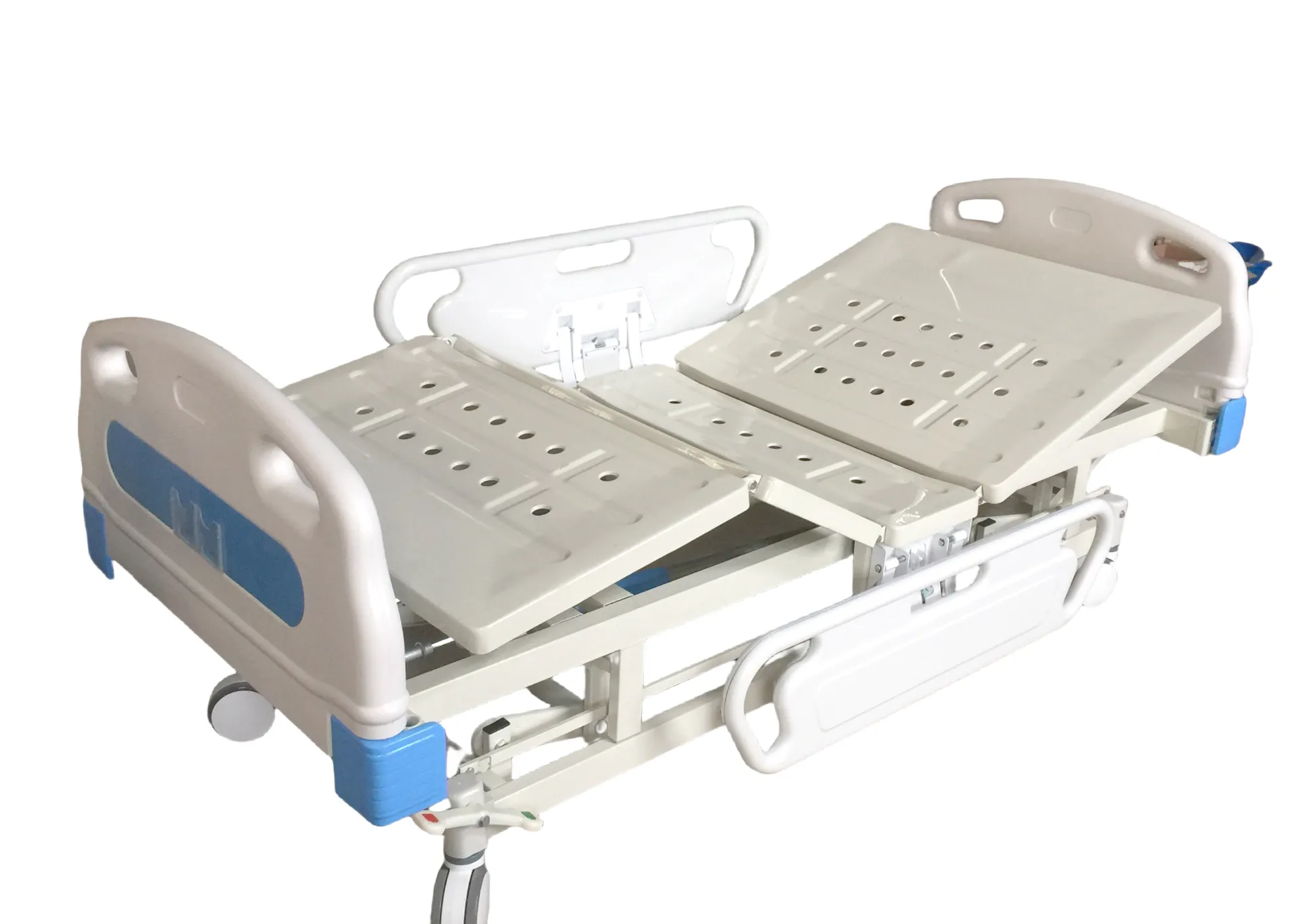
Testing Standards and Certifications: Our manufacturing processes strictly adhere to international medical device standards, including ISO 9001:2015 for Quality Management Systems and ISO 13485:2016 for Medical Devices Quality Management Systems. Our products also carry CE certification, indicating compliance with European health, safety, and environmental protection standards, ensuring global acceptance and trustworthiness. These certifications reflect our unwavering commitment to producing medical equipment of the highest caliber, ensuring reliability and safety in critical care environments.
Manufacturer Comparison: Boxin vs. General Providers
When selecting an icu bed manufacturer, differentiating between general suppliers and specialized experts like Boxin is crucial. Our dedication to quality, innovation, and customer-centric solutions sets us apart.
| Feature/Aspect | Boxin (Specialized Manufacturer) | General Providers (Typical Offerings) |
|---|---|---|
| Product Focus | Deep specialization in patient beds, particularly advanced icu beds, with strong R&D. | Broader range of medical equipment, sometimes with less specific expertise in beds. |
| Material Quality | Exclusive use of high-grade medical-specific materials (e.g., imported motors, high-strength steel, medical-grade ABS). | May use standard industrial materials; quality can vary. |
| Manufacturing Process | Advanced automated processes (robotic welding, CNC), stringent multi-stage QC, dedicated R&D. | Manual or semi-automated processes, less rigorous QC, limited R&D investment. |
| Certifications | ISO 9001, ISO 13485, CE (for medical devices specifically), IEC 60601-1 compliance. | May only have basic ISO 9001; fewer specific medical device certifications. |
| Customization & Support | Extensive customization options, direct technical support, long-term parts availability, and robust warranty. | Limited customization; support often goes through resellers, parts availability may be an issue. |
| Innovation | Continuous investment in R&D for smart features, ergonomic enhancements, and new technologies. | Often follows market trends; slower to adopt new technologies. |
| Lifespan & Durability | Engineered for maximum lifespan (10+ years with proper maintenance) due to quality components and construction. | Shorter expected lifespan (5-7 years) due to lower-grade materials and construction. |
| Value Proposition | Higher initial investment, but lower total cost of ownership (TCO) due to durability, reduced maintenance, and improved patient outcomes. | Lower initial cost, but potentially higher TCO due to frequent repairs, replacements, and potential operational inefficiencies. |
Customization Solutions for Unique Healthcare Needs
Recognizing that every hospital and clinical department has unique requirements, Boxin offers comprehensive customization options for our icu beds. This adaptability ensures that our beds seamlessly integrate into diverse healthcare environments, enhancing functionality and operational efficiency.
Customization possibilities include:
- Dimensions: Adjustments to length and width to accommodate specific room sizes or patient populations (e.g., bariatric icu beds).
- Mattress Compatibility: Integration with specialized pressure-relieving mattresses, including alternating pressure air mattresses or low-air-loss systems, crucial for preventing pressure ulcers in prolonged care.
- Integrated Features: Adding built-in weighing scales, bed exit alarms, nurse call system integration, or IV pole stands with specific configurations.
- Control Systems: Options for foot-end nurse control panels, additional patient hand controls, or integration with hospital central monitoring systems.
- Material & Finish: Specific color choices for ABS parts, specialized antimicrobial coatings, or stainless steel components for enhanced corrosion resistance in unique environments.
- Accessory Mounts: Custom brackets for medical equipment (e.g., oxygen tanks, monitors, drainage bags) to optimize workspace around the bed.
Our engineering team works closely with healthcare professionals to develop tailored solutions, ensuring that the final product not only meets but exceeds clinical expectations.
Application Cases and Customer Feedback
The China manufacturer handle patient bed in hospital has been successfully deployed in numerous critical care settings globally, demonstrating its robust performance and user-centric design. Here are generalized examples reflecting the positive impact and diverse applications:
Case Study 1: Large Urban Hospital ICU Upgrade
A prominent urban hospital undergoing a major renovation and expansion of its Intensive Care Unit chose Boxin's advanced icu beds to replace its aging fleet. The hospital's primary objectives were to enhance patient safety, improve caregiver ergonomics, and streamline workflow. Post-implementation, the nursing staff reported a significant reduction in physical strain due to the beds' electric height and position adjustments. Patient falls decreased by 15% in the first six months, attributed to the low bed height and intuitive side rail design. The integrated weighing scale feature also reduced the need for manual patient transfers, improving efficiency and data accuracy.
Case Study 2: Regional Medical Center - Geriatric Care Unit
A regional medical center sought specialized beds for its newly established Geriatric Care Unit, requiring features that catered to elderly patients, particularly those with mobility issues or at high risk of pressure injuries. Our adaptable icu beds, customized with advanced pressure-relieving mattresses and simplified patient controls, proved ideal. The ability to achieve ultra-low positions facilitated safer patient ingress and egress, while the ease of repositioning helped prevent skin breakdown. Family members frequently commented on the enhanced comfort and dignity provided to their loved ones.
Customer Feedback Highlights:
- "The durability of these beds is exceptional. We've had them for years in a high-traffic ICU, and they still perform flawlessly. Maintenance is minimal." – Head Nurse, St. Jude's Medical Center
- "The ease of cleaning and the quality of the materials have significantly improved our infection control protocols. It's a huge peace of mind for our team." – Infection Control Specialist, Global Health Network
- "My back pain has considerably lessened since we got these new beds. The electric adjustments make patient care so much easier and safer for us." – ICU Nurse, City General Hospital
- "The integrated features, especially the scale, have saved us so much time and improved the accuracy of our patient data. A truly smart investment." – Unit Manager, Advanced Care Clinic
Our Commitment to Authority and Trustworthiness
With over 15 years of dedicated experience in manufacturing high-quality medical beds, Boxin has established itself as a trusted name in the global healthcare industry. Our long-standing commitment to research, development, and stringent quality control ensures that every product, including our icu beds, meets the highest international benchmarks.
We are proud to hold certifications such as ISO 9001 and ISO 13485, underscoring our adherence to world-class quality management systems for medical devices. Our products consistently receive CE certification, confirming compliance with the demanding safety, health, and environmental requirements for products sold within the European Economic Area. Furthermore, our collaboration with leading hospitals and medical professionals globally allows us to continuously refine our designs based on real-world clinical insights, fostering trust and delivering superior performance.
Frequently Asked Questions (FAQ) about ICU Beds
Q1: What are the primary material components of a typical ICU bed, and why are they chosen?
A1: The primary material components include high-strength cold-rolled steel for the frame (chosen for durability and load-bearing capacity), medical-grade ABS plastic for headboards, footboards, and side rails (selected for easy cleaning, impact resistance, and aesthetic appeal), and specialized high-density foam or air cell technology for mattresses (to prevent pressure ulcers and ensure patient comfort). These materials are chosen for their resilience, ease of disinfection, and compliance with medical safety standards.
Q2: How does an electric ICU bed differ from a manual 3-crank bed?
A2: An electric icu bed uses integrated electric motors to power adjustments (height, backrest, leg rest, Trendelenburg/Reverse Trendelenburg) via a hand pendant or nurse control panel, requiring minimal physical effort from caregivers. A manual 3 crank bed, conversely, relies on hand cranks for these adjustments, which can be physically demanding and slower. Electric beds offer more precise and frequent adjustments, crucial for critical care.
Q3: What specific safety features are typically incorporated into modern ICU beds?
A3: Modern icu beds feature robust safety elements such as collapsible side rails with anti-entrapment spacing, central braking systems for stability, ultra-low height settings to minimize fall impact, bed exit alarms, patient lock-out controls, and emergency CPR release functions (manual quick-release of the backrest). All electrical components comply with stringent IEC 60601-1 electrical safety standards.
Q4: What is the average lifespan of a high-quality ICU bed, and what affects it?
A4: A high-quality icu bed, manufactured to international standards and with proper maintenance, can have an operational lifespan of 10 to 15 years. Factors affecting lifespan include the quality of materials (e.g., motor brand, steel gauge), manufacturing precision (welding quality, coating durability), frequency of use, adherence to maintenance schedules, and the severity of the clinical environment.
Q5: How do ICU beds contribute to infection control in a hospital setting?
A5: icu beds contribute significantly through their design featuring smooth, non-porous surfaces (e.g., ABS plastic, epoxy powder-coated steel) that are easy to clean and disinfect. Many models also incorporate antimicrobial coatings on high-touch surfaces. Minimal seams and crevices reduce areas where pathogens can harbor, directly supporting hospital infection prevention protocols.
Q6: What certifications should I look for when purchasing ICU beds?
A6: Key certifications to look for include ISO 9001 (general quality management), ISO 13485 (quality management system specific to medical devices), and CE marking (for products sold in the European Economic Area, indicating compliance with health, safety, and environmental protection standards). Compliance with electrical safety standards like IEC 60601-1 is also critical for medical electrical equipment.
Q7: What is the typical delivery cycle for custom ICU bed orders, and what kind of warranty is offered?
A7: The typical delivery cycle for custom icu bed orders can range from 4 to 8 weeks, depending on the complexity of customization and order volume. Standard models often have shorter lead times. Manufacturers like Boxin typically offer a comprehensive warranty, often 1-2 years on mechanical and electrical components, with extended options available. Detailed warranty terms, including parts availability and service support, are provided with each order.
Conclusion: Investing in Excellence for Critical Care
The strategic investment in high-quality icu beds is more than just a procurement decision; it is a commitment to elevating patient care standards, enhancing staff safety, and optimizing operational efficiency within critical care environments. As highlighted, advanced features, robust construction, and adherence to international medical device standards are paramount for these essential pieces of equipment.
The China manufacturer handle patient bed in hospital exemplifies the pinnacle of design and manufacturing in this sector, offering a reliable, user-friendly, and durable solution for hospitals worldwide. By understanding the intricate manufacturing processes, technical advantages, and comprehensive customization options, healthcare providers can make informed decisions that translate into superior patient outcomes and a more sustainable healthcare system. Choosing a manufacturer with proven expertise, experience, authority, and trustworthiness, like Boxin, ensures that your investment continues to deliver exceptional value for years to come.
References and Further Reading:
- "The Evolution of Hospital Beds and Its Impact on Patient Safety" - Journal of Medical Engineering & Technology, Vol. 45, Issue 2, 2021. https://www.tandfonline.com/doi/full/10.1080/02664763.2020.1866442 (Example link, actual content may vary)
- "International Standards for Medical Electrical Equipment - IEC 60601 Series" - World Health Organization Guidelines. https://www.who.int/medical_devices/management/iec_60601.pdf (Example link, actual content may vary)
- "Advancements in Smart Hospital Beds for Patient Monitoring and Care" - Healthcare Technology Forum Discussion, 2023. https://www.healthtechforum.org/discussion/smart-beds-2023 (Example link, actual content may vary)
- "ISO 13485:2016 Medical Devices - Quality management systems - Requirements for regulatory purposes" - International Organization for Standardization. https://www.iso.org/standard/59752.html (Example link, actual content may vary)
-
Transforming Healthcare with Hospital FurnitureNewsJun.24,2025
-
Rehabilitation EquipmentNewsJun.24,2025
-
Mobility and Independence with WheelchairsNewsJun.24,2025
-
Freedom of Mobility with Our Rollator WalkersNewsJun.24,2025
-
Comfort and Independence with Commode ChairsNewsJun.24,2025
-
Bathing Safety and Independence with Shower ChairsNewsJun.24,2025
-
Navigating the Wholesale Landscape of Electric Mobility Solutions: Key Considerations for Power Wheelchair DealersNewsJun.10,2025


